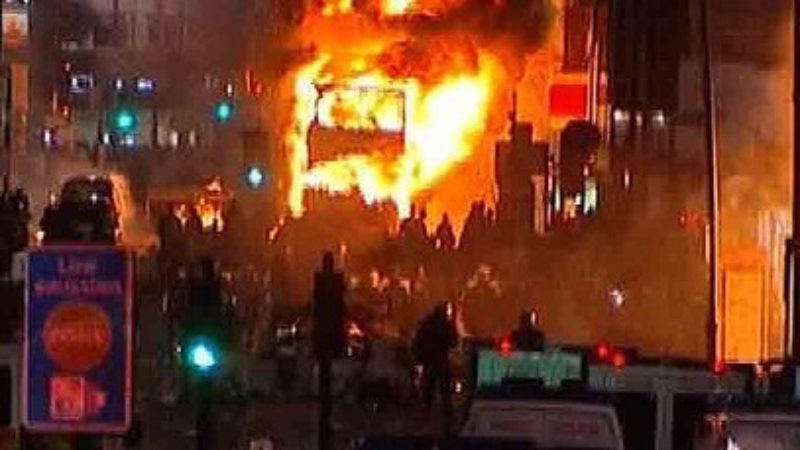
6th August. A year since the start of 2011 disturbances, which saw the worst riots of a generation. On this anniversary thoughts will first turn to those affected. Families and communities were devastated by the riots, and we can not forget that people lost their lives – some of whom were trying to protect their communities.
Whether or not we are going to see a repeat of the riots in the future depends not just on the resilience of our communities, but also on the support provided by public agencies, most notably councils. Questions remain about how prepared communities are to respond to any future riots and what can be done to ensure that riots are prevented in the future. The immediate aftermath of the riots was heartening; communities and volunteers rallied together to clean up the mess left on their doorstep. But the possible underlying causes sparking riots are not easy to tackle; and this is made harder because of the pressure that the government is putting local authorities under.
There has been heated debate about the underlying causes of the riots and what motivated rioters. Some have blamed family and social breakdown, some economic policy, whereas others point to simple criminality. What the studies tell us is that there was no single reason why people decided to riot, but instead a range of things ranging from the shooting of Mark Duggan, unemployment, friction between police and communities, poverty, moral decline to simply wanting a new pair of trainers.
Of all the characteristics in areas where rioting took place, one of the factors that has been cited as a possible cause of riots is levels of deprivation. Although rioting was not experienced in many deprived areas, 70% of people who went to court were from the 30% most deprived postcodes in the country. In the areas where riots took place, 30 were in the top 25% most deprived areas in England. The University of Manchester has pointed to evidence of a clear association between poverty and the likelihood of being involved in the riots.
However, tacking the causes of deprivation is highly complex; requiring multiple interventions from a variety of public agencies and from within communities themselves. Many of the recommendations from the Riots, Victims and Communities Panel are focussed on interventions in areas of high deprivation, and involve schools, the curriculum, social care, youth service provision, volunteering, housing, careers support, employment opportunities, The Work Programme, Youth Offending Teams, Probation Trusts, the police and neighbourhoods.
These recommendations point to a multi-agency approach to tackling the underlying causes of the riots – and particularly to the role of early intervention programmes with children and families and building community resilience. Responsibility for much of this work lies with local authorities – who also have a key role to play in bringing communities together to build resilience and understand underlying community tensions.
But we know that funding these vital early intervention programmes and community development is getting harder because of the immense cuts that local authorities are being made to deliver. To make matters worse, the most deprived areas and those that need early intervention work the most, are those same areas that have been hit hardest by the cuts.
The government’s distribution of cuts to local authorities so far has been very uneven. In the Grant Settlement for 2011-12, the bottom 5th of councils in terms of deprivation had the largest cuts. This has hit Labour authorities particularly hard: of the 20 most deprived areas according to the 2010 English IMD, 19 of these areas are in Labour controlled authorities. What is more, important interventions such as Sure Start Centres have been closed and continue to be under threat, and The Work Programme to get the long-term unemployed into work, is flawed and many believe it will fail.
A recent LGiU survey of local authorities has shown that 95% of authorities surveyed feel that they are prepared to respond to future riots and 6 in 10 councils are doing work, or have continued doing work to build social capital and community resilience. This is encouraging, and we know that Labour councils affected by the riots, such as those in Liverpool, Manchester and Birmingham have been working with their communities to build capacity to prevent future riots.
But with local authority cuts set to continue the environment will become more challenging than ever before – if we are to avoid a repeat of 2011 councils need to have the funding to invest in key intervention programmes, community development and economic growth; all things that could help to prevent future riots. As things currently stand, government policy could threaten this.
Laura Wilkes is a Policy Manager at Local Government Information Unit. She writes here in a personal capacity.




More from LabourList
‘Our coalition is fracturing. We can rebuild it by making life affordable again’
‘Protest politics is failing London – Labour is not’
Letters to the Editor – week ending 16th November 2025